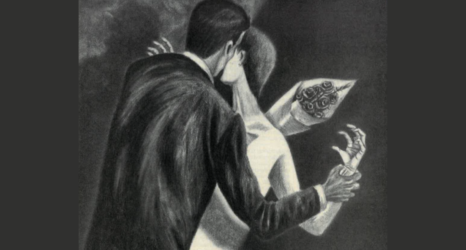
Helena was 17 years old when she was first told that her body wasn’t her own. She pulled up to the self-service car wash in her Volkswagen Rabbit when a man approached her, forced her into her car at knife-point and directed her to drive to several locations.
The man assaulted her repeatedly but left her alive—with a promise to return and make her “his girlfriend.” He took her driver’s license, which listed her name and address, to signal his intention to follow through on the commitment; she waved down a police officer and was taken to the hospital.
At the time, rape kit methodologies weren’t as advanced. Helena laid on a steel table for several hours while hers was collected.
Rape kits still takes four to six hours. They’re still as invasive, with poking and prodding and in-depth photography involved. But now, the patient has every right to waive any aspect of the kit. Instead of laying on a steel gurney, they stand on a white sheet of paper.
For hours, the patient is swabbed from head to toe. Every orifice is examined. Their hair is combed, their teeth flossed, their nails scraped. They are completely naked in front of multiple medical professionals while they are examined, photographed and questioned.
“Rape kit” is a colloquial name. These kinds of collections are not reserved solely for victims of rape—they’re used for any claim of sexual assault that involved the exchange of fluids, skin particles or other DNA samples. The photographic aspect of the kit can also be useful in cases where there is a lack of DNA evidence, but clear physical trauma.
Some victims decline to subject themselves to a rape kit collection simply because it is too traumatic to submit to one. In some cases, the process takes a full 24 hours from assault to discharge. The patient can’t eat, drink or shower while theirs is prepared. They are repeatedly violated by the invasive techniques necessary to collect evidence. They can’t take a break or rest. In the meantime, they must make a statement and answer excruciatingly detailed questions from police officers.
After Helena was released, she had a 13-day wait until more evidence turned up—her car, still covered in the dusty outline from where her body was plastered to the hood during her assault. After the police dispatched to handle her case had fulfilled their required duties, Helena waited again, this time for 13 years.
During that time, Helena did not hear from the police officers she had worked with, nor could she reach them. All the while, her rapist was free—and her rape kit was untrackable and untested.
The rape kit collection process can feel like a second assault. Unfortunately and unforgivably, so can the end result.
It is estimated that hundreds of thousands of untested rape kits are sitting on shelves in police departments and labs, and that hundreds of rape kits have also been destroyed by police officers.
Much of this—the backlog and the destruction of justice for survivors—is intentional and systematic. But sometimes it’s the result of poor police work. Police officers are rarely trained to muddy themselves in cases related to sexual assault trauma or handle evidence from sexual assault.
Even when rape kits are sent to labs for testing, state funding can complicate the process. A kit can cost as little as $600 and as much as $1,500 to test; it depends on the nature of the case—how many DNA profiles are involved, or any other factors that complicate testing will increase the cost. With hundreds of thousands of kits in waiting, the costs of clearing the backlog across the country are astronomical, and if any state’s lab is short of funds, the kits don’t get tested.
Testing rape kits is additionally complex because of the staff and time commitment necessary to see the process through, not to mention the tedious nature of the testing. Even if labs receive enough funding, they struggle to maintain staff power. The training is time-consuming, and testing a kit takes skilled analysis and an equal amount of forensic investigation. In order to label a kit’s testing complete, technicians and analysts must isolate and categorize every unique sample of DNA and then run the samples against profiles in a three-tiered system called the Combined DNA Index System.
Of course, none of this does much to comfort the survivors seeking justice, or those put in danger by the same assailants. When a rape kit goes untested, it tells the victim that what happened to them doesn’t matter—and it tells entire communities that law enforcement authorities don’t mind if it happens again.
After a sexual assault, victims go through periods of shock, denial and even a “sense of detachment from the body,” according to sexual assault trauma counselor and survivor Holly Morseman. This shock and denial is fueled, in part, by a sense of betrayal—a sense that their body defied them in some way.
“After an assault, the victim just wants to be clean,” Morseman told Ms. “They feel disgusting and they just want to shower. Often they will scrub several layers of skin off their body just trying to get clean again.”
Sexual assault is an intimate and personal crime that violates a person on every level. The assault is imprinted on the victim’s body—in physical marks and vivid sensory flashbacks. For a rape kit to be valid, however, victims have to prolong their feeling of attachment to their “dirty bodies.” Law enforcement agencies need the information those bodies carry in order to process their cases.
Sexual assault changes a person’s view of self, especially their body, and a rape kit becomes an extended vestige of a survivor’s own body—at great personal cost. “I can count on probably one hand,” said Morseman, “how many of my patients chose to get a rape kit and pursue legal justice. It’s a lot to ask of someone who feels disgusting and violated.”
Law and Order: SVU star Mariska Hargitay has been fighting to end the rape kit backlog through the work of her Joyful Heart Foundation, and their efforts have led, in part, to an invigorating wave of reform. The foundation pushes for more funding to labs and for state regulations requiring responsibility for testing kits; it fostered a massive push to get all rape kits tested, even those dating back to the 80’s.
In the time following this push, Helena became curious about the fate of her own kit. Helena is one of many survivors who submitted her stories to the foundation’s website, one of many women who survived for years without knowing what happened to their kits and what was happening with their cases.
Thanks to activists like Hargitay and foundations like Joyful Heart, Helena’s kit was finally tested. She was free from the fear that her attacker would find her, and he was no longer free to continue hurting women like her. Within a week of connecting with a victim advocate, she was contacted with the news that her kit had been processed and matched with her rapist—a man already serving 25 years for several consecutive rapes following her assault.
The system is not designed to protect or respect survivors, and the standard reporting process for sexual crimes isn’t designed to encourage their coming forward. This is not news, but it’s worth repeating.
At its core, the systemic message that a victim must get a rape kit communicates a mythology of suspicion surrounding sexual assault. Although rape kits should be done within 72 hours of the assault, since that’s the lifespan of semen within the body, victims are still encouraged to have a rape kit taken if 72 hours have passed. While the evidence is no longer valid and the victim has been subjected to further violation, agreeing to a kit increases the legal system’s likelihood of prosecuting the perpetrator.
Victims are also told, by law enforcement officers and even victim advocates, that if they don’t report, don’t go to court and don’t get a rape kit, they are responsible for any further assaults their assailant commits—even though their kits likely will go untested, and most rapists evade sentencing.
In the end, survivors who complete rape kits are offered a breadcrumb condolence in exchange for their sacrifice and strife: they’ve become “credible accusers.”
Helena still grieves: for having waited so long, for the other women who were assaulted while her kit went untested, for the many other untested kits across the nation. She is one of countless survivors who was forced to endure what Morseman describes as the “suspended animation of not getting the justice they want, but constantly having the assault on their mind.”
For Helena, that suspension took 13 years. If not for demands from advocates, it may have been a suspension that lasted decades—or a lifetime. “The message we are communicating, in so many different ways, in this system,” said Morseman, “is that your rape does not matter.”
Through Joyful Heart’s tremendous work, the standards for treating sexual assault have been raised across the nation. States like Oregon now require specific police officers to be dedicated to responding to rape kit questions and coordinating their movement through the system. More hospitals are hiring Sexual Assault Nurse Examiners to oversee sexual assault trauma cases and administer the kit exam. The foundation is even working to nationalize a tracking system for rape kits so they don’t get lost and are tested in a timely manner.
Because of these efforts, people can feel a sense of control over their bodies—and their bodies of evidence.
“I am grateful for every advocate, every survivor, every friend and relative who stands up for what is right and just, who stands up for compassion and healing,” Helena rejoices. “As someone who has been locked in the isolation of fear for so long, to meet such hearts rekindles my belief in what the future can bring.”





